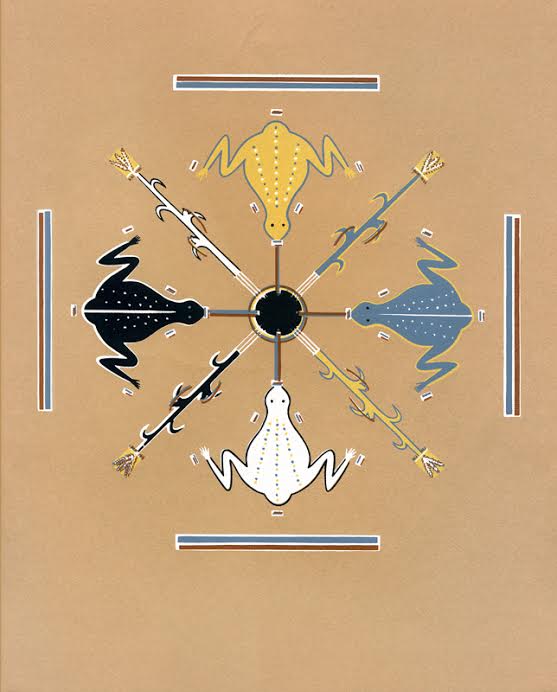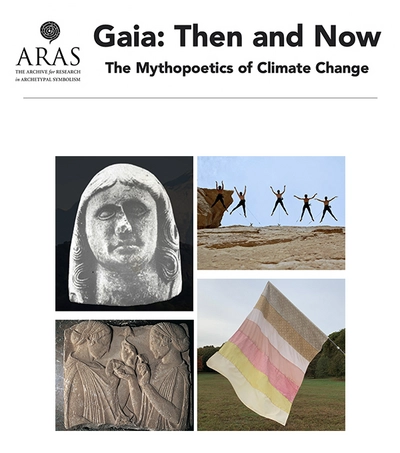ARAS Connections: Image and Archetype - 2022 Issue 4

"I used to think the top global environmental problems were biodiversity loss, ecosystem collapse and climate change. I thought that with 30 years of good science we could address these problems. But I was wrong. The top environmental problems are selfishness, greed and apathy, and to deal with these we need a spiritual and cultural transformation, and we scientists don't know how to do that." James Gustave Speth, Shared Planet: Religion and Nature, BBC Radio 4 (1 Oct. 2013)
ARAS is excited to publish in video book form Season One of its Gaia: Then and Now project. This project is a mythopoetic exploration of Gaia—both as the ancient Greek goddess of the Earth and in her current incarnation as a scientific theory that sees the interconnection of all things as part of the planet. Our presenters are artists, dancers, actors, playwrights, scientists, mythologists, and Jungian analysts. Through their eyes, ARAS brings a unique perspective to the discussion of Gaia, climate change and our human relationship to the planet. Almost all of the discussions about climate change to date have been focused on the science that supports the notion that climate change is real and caused by human beings vs. those who deny its reality, its human causes, and question the validity of the scientific evidence supporting its existence. That the debate has focused on the science is only natural in an era when the scientific method has been embraced for several hundred years as the fundamental way of knowing the truth about the earth and the universe. For a far longer period of time, there has been another way of knowing about the world—what we might call the mythopoetic way of knowing. The scientific and mythopoetic ways of knowing have been at odds with one another for several centuries. At a time when everything seems to be polarizing in our views of the world, it might seem odd to suggest that the scientific and mythopoetic ways of knowing can be viewed as complimentary rather than at war. Gaia: Then and Now seeks to explore the mythopoetic ways of knowing the nature of the earth and the current crisis of climate change—not by putting itself in opposition to the scientific way of knowing, but rather by offering itself as a complementary way of understanding our dire situation and how we got there.
Why ARAS for this exploration? ARAS’ central focus is on symbolic imagery as a way of knowing essential truths about the experience of being human. Symbolic images are able to convey truths that are complex because, by definition, symbolic images can hold and reconcile multiple meanings in one image, even conflicting meanings. Can we approach climate change from a mythopoetic point of view in which symbolic imagery helps us understand and appreciate the sacred nature of our planet and the great peril that it is in? ARAS has undertaken this project to use our focus on symbolic imagery as a way of exploring and knowing about Gaia, mother earth as a sacred being and as a vastly complex interconnected system of organic and inorganic forms that support and nourish our being as part of a greater whole.
Season Two of Gaia: Then and Now will begin in February, 2023. More information on that to come!
Gaia: Then and Now - Season One

This edition of ARAS Connections is devoted to the publication of Season One of Gaia: Then and Now. We think of it as a "video book". It is a collection of videos in which Jules Cashford, Brooke Singer, Shoshana Fershtman, Craig san Roque and Miriam Pickard, Elisa Venezia and Dark Sky Aerial, and Jeffrey Kiehl offer an extraordinary series of webinars that explore the mythopoetic imagination and symbolic imagery of Gaia: Then and Now.
Contents
Become a Member of ARAS!
Become a member of ARAS Online and you'll receive free, unlimited use of the entire archive of 17,000 images and 20,000 pages of commentary any time you wish—at home, in your office, or wherever you take your computer.
The entire contents of three magnificent ARAS books: An Encyclopedia of Archetypal Symbolism, The Body and The Book of Symbols are included in the archive. These books cost $330 when purchased on their own.
You can join ARAS Online instantly and search the archive immediately. If you have questions, please call (212) 697-3480 or email info@aras.org
We Value Your Ideas
As our newsletter grows to cover both the ARAS archive and the broad world of art and psyche, we're eager to have your suggestions and thoughts on how to improve it. Please send your comments to info@aras.org. We look forward to your input and will reply to every message.
Subscribe
If you're not already a subscriber and would like to receive subsequent issues of this newsletter by email at no cost, e-mail us at newsletter@aras.org.
